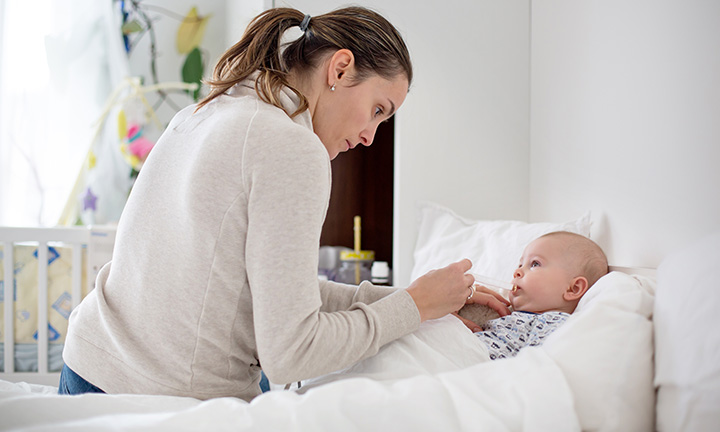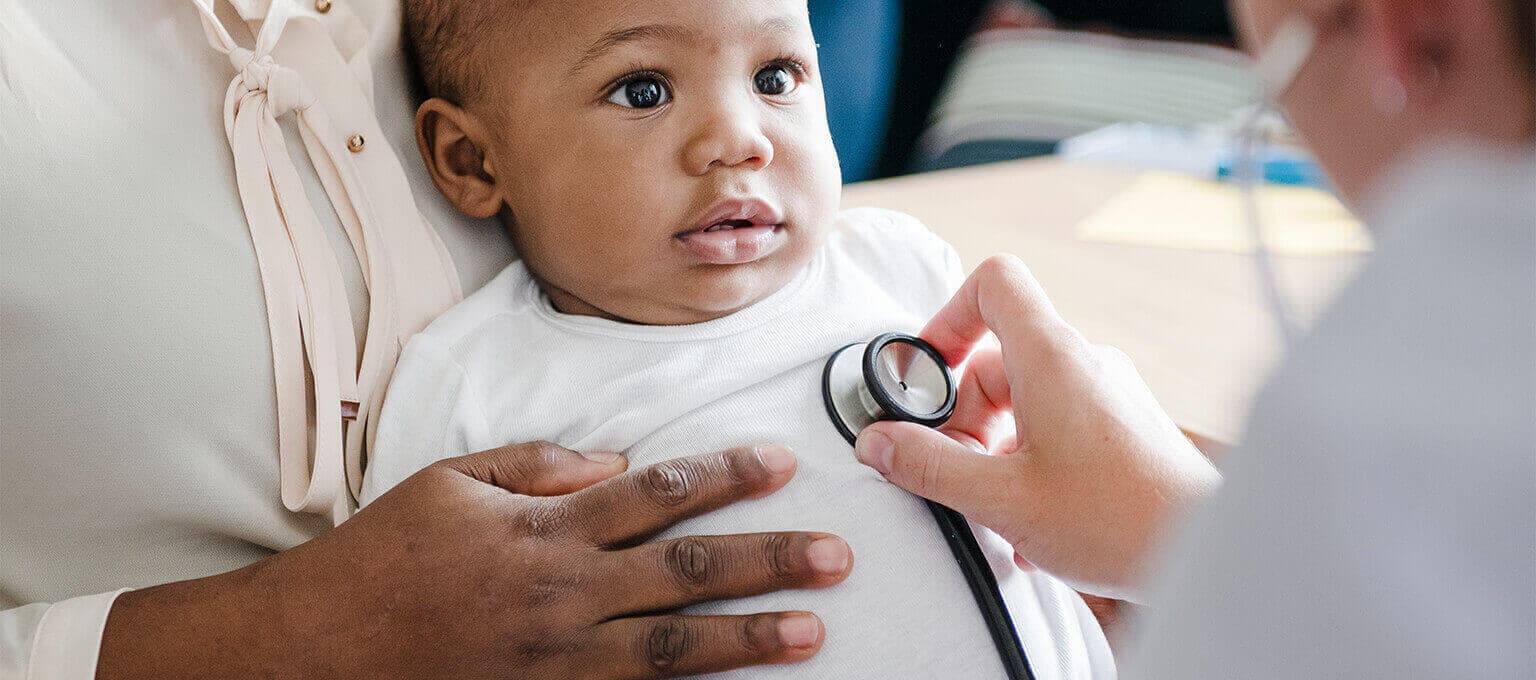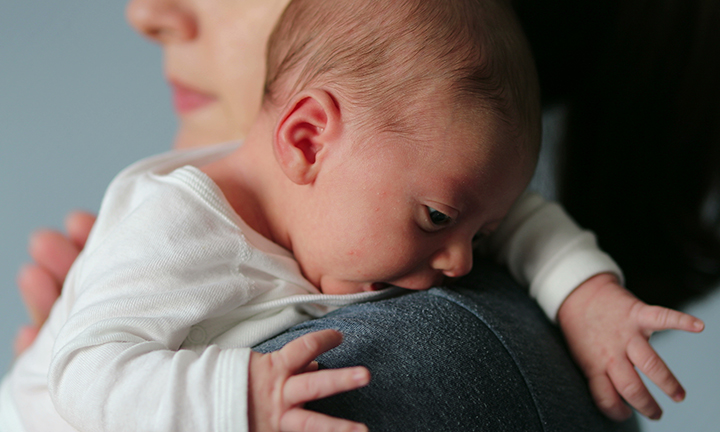
Strep Throat in Babies and Toddlers: Signs and Treatment
Your little one might get a sore throat every now and then. While a viral infection is the most common cause of this in infants and babies, strep throat in babies is another possible reason. Let's break down what strep throat is, what causes it in little ones, how to recognize the signs, and the best ways to treat it.
What Is Strep Throat and Can Babies or Toddlers Get It?
Strep throat is a bacterial infection caused by the Streptococcus pyogenes bacterium. It can give you a sore throat and inflamed tonsils and is often mistaken for viral throat infections.
Besides making your throat scratchy and sore, strep throat can bring on a fever, rash, and even kidney problems if it's not treated. The good news? Strep throat is easy to treat with antibiotics.
Even though strep throat is most common in children aged 5 to 15, it can happen at any age. So yes, babies can get strep throat, but it's pretty rare in little ones.
What Are the Symptoms of Strep Throat in Babies and Toddlers?
The symptoms of strep in babies and toddlers may differ from those of adults and older kids.
Strep Throat Symptoms in Babies
The symptoms of strep throat in infants tend to be mild and may include the following:
Strep Throat Symptoms in Toddlers
Among the symptoms of strep throat in toddlers are the following:
Strep Throat Symptoms in Children Over 3 Years Old
For older children, strep throat can cause:
What Causes Strep Throat?
The bacterium Streptococcus pyogenes, also known as group A streptococcus, is what causes strep throat.
This kind of bacteria spreads easily. It can be passed through the air when someone sneezes or coughs, or by sharing food or drinks with an infected person. Your baby or toddler could also get infected if they touch a contaminated surface and then touch their nose, mouth, or eyes.
How to Protect Your Little One Against Strep Throat
Here's what you can do to lower the chances of your baby or toddler (or anyone in the family) catching strep throat:
How Is Strep Throat Diagnosed?
If you think your child might have strep throat, it's best to take them to the healthcare provider. Diagnosing strep throat in babies may need a rapid strep test or a throat culture, which can give results in minutes. A negative result usually means the infection is likely caused by a virus.
However, up to a third of negative rapid strep tests can be false negatives. So even if the rapid test says negative, if your healthcare provider thinks strep throat might be the cause, they might swab your child's throat to test for the presence of the streptococcus bacterium, just to be sure. The results from the throat culture usually come back in a day or two.
What Is the Treatment for Strep Throat?
Strep throat in babies is easy to treat. If the tests come back positive, your healthcare provider will likely prescribe antibiotics that can be given as a liquid or injection.
Make sure your little one takes the full course of antibiotics, even if they start feeling better before it's finished. For kids older than 3, it's really important that strep throat is fully treated to prevent serious complications, like abscesses in the tonsils or kidney problems.
When Should You Contact Your Healthcare Provider?
If your little one isn't feeling well, it's always a good idea to check in with your healthcare provider.Get in touch if you notice any of these signs:
Very rarely, a group A strep infection can lead to complications like ear infections, sinusitis, abscesses in the tonsils, lymph node infections, or scarlet fever. That's why it's important to consult your child's healthcare provider and follow their treatment plan.
What Is the Difference Between a Sore Throat, Tonsillitis, and Strep Throat?
You might have heard the terms tonsillitis, strep throat, and just a regular sore throat used interchangeably, and wonder what's the difference between them. Here’s a quick rundown:
If you suspect your child’s throat is bothering them, consult your healthcare provider, who can make a diagnosis and recommend the appropriate treatment.
FAQS AT A GLANCE
Strep throat usually doesn't cause dangerous complications in infants and only rarely needs treatment from your healthcare provider.
The Bottom Line
The good news about strep throat in babies is that it's super rare in infants and toddlers and is usually mild when it does happen in kids under 3. Even for older children, antibiotics usually do the trick. If you're ever worried about how your little one is feeling, reach out to your healthcare provider for advice and to make sure everything's okay. And while you focus on keeping your baby healthy, the Pampers Rewards App can help you save on essentials with exclusive discounts and digital offers—because every little moment matters!
- American Academy of Pediatrics. Caring for Your Baby and Young Child: Birth to Age 5, 6th ed. (New York: Bantam Books, 2014).
- Healthy Children. “Can Infants Get Strep Throat?”
- Healthy Children. “The Difference Between a Sore Throat, Strep & Tonsillitis.”
- Healthy Children. “When is a Sore Throat a More Serious Infection?”
- Kids Health. “Test Rapid Strep.”
- Mayo Clinic. “Strep Throat.”
- Mayo Clinic. “Tonsillitis.”
- Mayo Clinic. Tonsillitis Diagnosis.”
Read more about Baby
Related Articles
Join a World of Support
through Pregnancy and Parenthood.
TRACK WITH TOOLS
LEARN WITH EXPERTS
GET REWARDED













